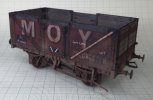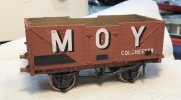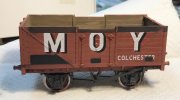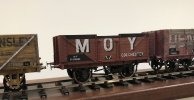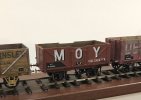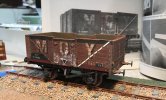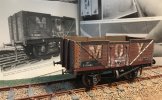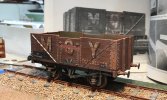Overseer
Western Thunderer
The recent discussion about Thomas Moy wagons prompted me to build one of the Slaters 1923 RCH 7 plank wagon kits to become ex Moy wagon P 150663 in the condition photographed in 1952 and published in 'The 4mm Coal Wagon'. This has been on the list of wagons to build for quite a few years.
The Slaters kit is an excellent representation of the 1923 RCH wagons. I like the lack of internal detail as it makes it easier to add the texture of the unpainted planks. I like to replace the brake blocks and push rods, the supplied injection mouldings are not bad but Exactoscale brake blocks and Ambis push rods are better. I modified the sides to represent the London plank and reduced the end door height to match the photos. Otherwise the kit was built as supplied.
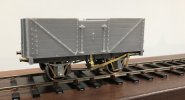
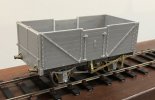
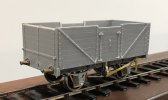
The outside airbrushed Phoenix red oxide -
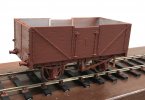
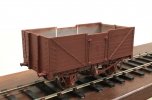
I drew the lettering during the week and printed it on decal paper for application once the paint is dry.
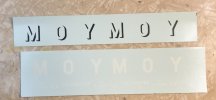
Still need to add the brake safety loops and the capping clips, and paint the black bits and interior before distressing to match the photos.
The Slaters kit is an excellent representation of the 1923 RCH wagons. I like the lack of internal detail as it makes it easier to add the texture of the unpainted planks. I like to replace the brake blocks and push rods, the supplied injection mouldings are not bad but Exactoscale brake blocks and Ambis push rods are better. I modified the sides to represent the London plank and reduced the end door height to match the photos. Otherwise the kit was built as supplied.



The outside airbrushed Phoenix red oxide -


I drew the lettering during the week and printed it on decal paper for application once the paint is dry.

Still need to add the brake safety loops and the capping clips, and paint the black bits and interior before distressing to match the photos.

